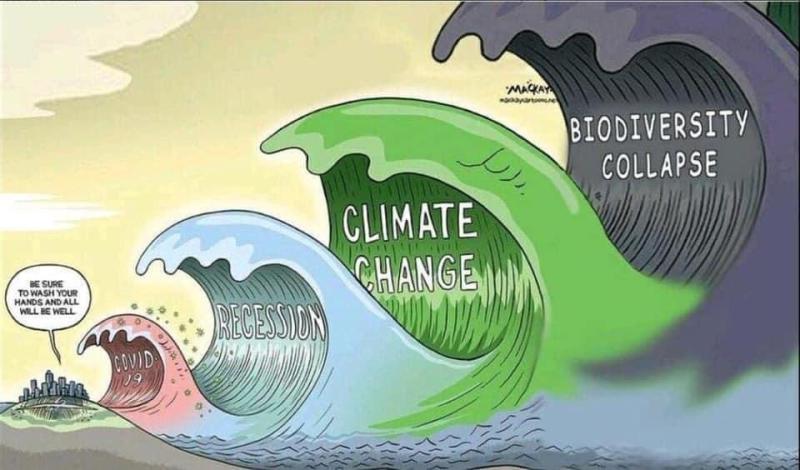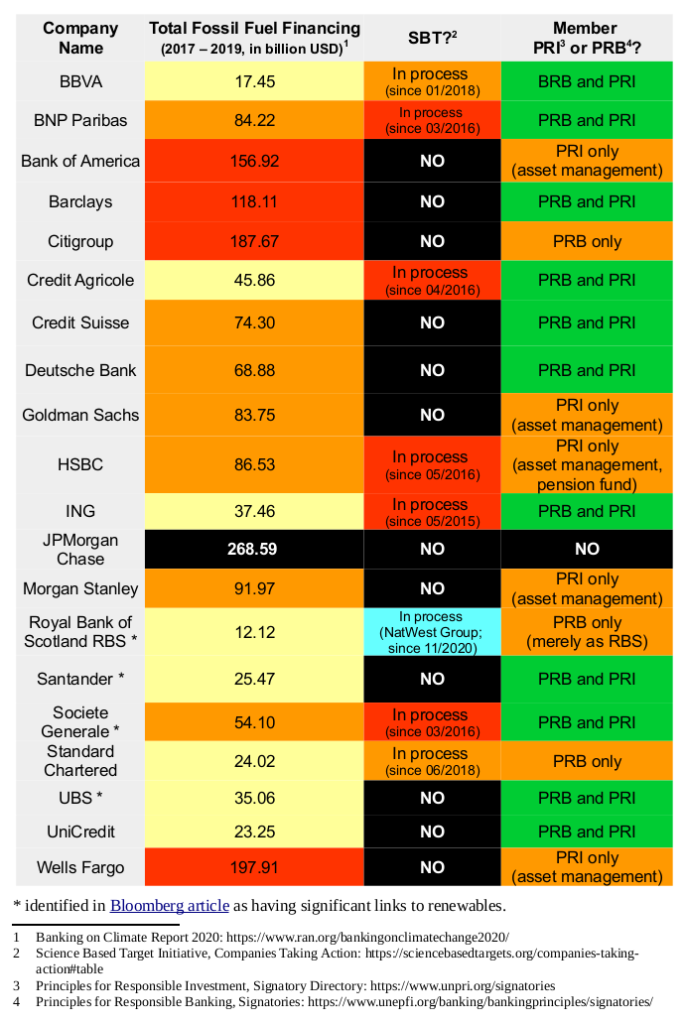
Measuring Biodiversity, in terms of baseline (status quo), progress, and deliverable targets, is not a simple thing. Collateral damages are a serious risk – or maybe better: unintended consequences, serious cases of ‘verschlimmbessern’ (German term meaning: ‘making something worse in the genuine intent to make it better’).
At the same time though, some companies at least do use outcomes of tools, which where never intended to deal at all with biodiversity, as proxy-results for their targets.
This of course raised the question: Where are we with tools, programmes, and measurement systems for biodiversity?
Hereafter a look across of what I found to be having teeth.
Ask: If you are aware of others as per date of writing (November 2021): do let me know and I’d be happy to list them also. Thank you!
Biodiversity and measurements: 2 opposites, joined by aspirations for transition
Very similar to what we find in the climate/carbon spectrum, it seems that also the topic of biodiversity is dealt with in a similar 2-sides-of-a-coin approach: tools or methodologies that deal with risk on the one hand, and those that deal remediation/improvement goals on the other.
Note: I purposely leave any tool out that first and foremost serves the mere purpose of reporting (such as, to take an example out of the carbon space, CDP).
This is relatively unsurprising as it follows very closely the juxtaposition of how the different business and regulative communities think, namely: risk aversion vs value preservation.
The middle space between those polar opposites is taken by a few management tools that aspire to sign post the path from one (risk aversion) to the other (value preservation).
- Risk Aversion – dominant in the Finance Industry and the regulatory space in particular. Here we find tools/methodologies such as the following:
- Carbon / Climate Risk: Task Force for Climate Related Disclosure (TCFD).
The TCFD develops recommendations for more effective climate-related disclosures that could ‘promote more informed investment, credit, and insurance underwriting decisions’ and in turn, ‘would enable stakeholders to understand better the concentrations of carbon-related assets in the financial sector and the financial system’s exposures to climate-related risks.’ (Source, page 5) - Biodiversity (interestingly often called just denominated ‘nature’): Task Force on Nature-related Financial Disclosure (TNFD).
The TNFD’s mission is ‘to develop and deliver a risk management and disclosure framework for organisations to report and act on evolving nature-related risks, which
aims to support a shift in global financial flows away from nature-negative
outcomes and toward nature-positive outcomes.’ (Source) - Regionalised Biodiversity Risk: The IBAT Alliance’s Integrated Biodiversity Assessment Tool is the first tool to integrated three usually disjoint data sets. Namely the IUCN Red List of Threatened Species; the World Database on Protected Areas, and the World Database on Key Biodiversity Areas. It allows a localised few on biodiversity areas and the risks they are exposed to. The alliance partner’s vision is “hat decision affecting critical biodiversity should be informed by the best and most up to date scientific information and the decision makers who use that information should help support its generation and maintenance.“
- Carbon / Climate Risk: Task Force for Climate Related Disclosure (TCFD).
- Value Preservation – dominant in the NGO space, and more recently in players in the ‘Real Economy’. Here we find tools/methodologies such as the following:
- Carbon / Climate Risk: Science-based Targets Initiative (SBTi):
The SBTi ‘drives ambitious climate action in the private sector by enabling companies to set science-based emissions reduction targets.’ (Source) - Biodiversity (‘nature’): Science-based Targets Network (SBTN)
The SBTN’s mission is: ‘to develop methods for cities and companies to set integrated targets across all Earth systems by 2022; to build on the progress of establishing science-based targets for climate to achieve widespread adoption of science-based targets on water, land, biodiversity and ocean by 2025; to demonstrate significant progress in line with key global policy milestones like the SDGs, and goals and targets under the UNFCCC, UNCCD, CBD, by developing an indicator framework that tracks how SBT setters deliver progress; to work to embed adoption of science-based targets within capital markets by partnering with policy makers, financial institutions and service providers such as benchmarkers and credit agencies.’ (Source)
- Carbon / Climate Risk: Science-based Targets Initiative (SBTi):
- Management Tools – increasingly used in the Real Economy in order to manage the transition from risk based assessments to value preserving business strategy, along all axes:
- Future Fit Business Benchmark (FFBB):
The Future-Fit Business Benchmark is ‘a free business tool designed to guide real progress toward a flourishing future – and make the SDGs a reality.’ It ‘collates and curates the most credible and robust third-party resources into one unified self-assessment tool […] that any business can use to guide, measure and report on real progress. (Source, Source). - B Impact Assessment (BIA; only however if used in combination with SBTs):
The BIA is a proprietary, but ‘free platform and tool designed to help measure and manage your company’s positive impact on your workers, community, customers and environment. It assesses the impact of both your company’s day-to-day operations and your business model—both what you do and how you do it.’ (Source)
- Future Fit Business Benchmark (FFBB):
Status Quo: Everything flows – or nearly
Other than in the carbon and climate change space, most things biodiversity are still under development. A significant reason for this is simply that their development started a lot later those around carbon.
Nonetheless, while TNDF still is mostly in its fact- and approach finding phase, SBTN does offer already some indicators (called ‘interim targets’) of relevance. The most important of these are:
- Zero Deforestation from 2020 (cf. COP26 statement)
- Retention or regeneration of working lands
- Increase in areas of restoration
The expectation is that further, and notably sufficient target levels and guidance will be published at COP15 (part 2) in 2022.
Tools & Teeth: Will there be progress?
The answer to this is unsurprisingly: first, define ‘progress’ and secondly, ‘it depends’ – on the definition that is.
TCFD has proven to be surprisingly effective, albeit not perfect. In is for example the base upon which Exxon Mobile is currently taken to court by the State of New York for financial fraud and misrepresentation (read more here). In essence, it was thought that Exxon Mobile had used different sets of carbon pricing in their scenario, and therefore share price implications, modelling. Equally interesting, the case was dismissed in the end, as no investor had come forward to claim fraud. Further, the modelling asked for in the TCFD regulations is being increasingly pushed forward by investors with every passing proxy season.
It can be expected that something similar will invariably happen once TNFD comes out with clear guidance and approaches.
Equally, the business community is truly waiting for someone to take the lead on providing methodology and guidance on nature-related science-based targets. But will these be ultimately as successful as the carbon-related one.
The urgency around planetary boundaries set aside – I am doubtful.
Carbon is easy relative to biodiversity. And yet we see how challenged the business community is with getting to grips with decarbonisation. Biodiversity is several orders of magnitudes more complex than carbon, and also more fine-grained in the approaches it requires.
On the other hand, the current popularity of the BIA (sadly though, mostly without any associated SBTs, and therefore not necessarily helpful in the global context), and the increased take up of the FFBB by serious players in the field, show that there is an appetite provided management tools exist.
That, to me, is the glimmer of hope I am clinging to.


